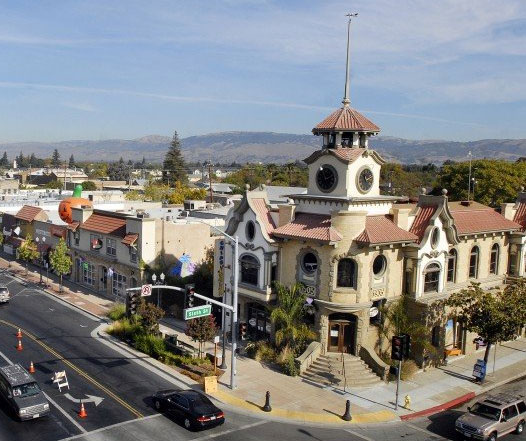
Introduction
Foster City has established comprehensive regulations to facilitate the construction and integration of Accessory Dwelling Units (ADUs) within its residential areas. These regulations aim to increase housing options while maintaining the character of neighborhoods. ADUs, also known as secondary units or granny flats, offer flexible living solutions, whether for family members, rental income, or additional space. The local government encourages ADU development through streamlined permitting processes and clear guidelines. ADU Specialist Bay Area is here to guide you through every step, ensuring a hassle-free experience.
Essential ADU Rules for Foster City
What you can build
Maximum size
ADUs can be up to 1,200 square feet.
Side / rear setbacks
Minimum 4 feet from property lines.
Two stories
Allowed, subject to design review.
Building separation
Must be at least 10 feet from other structures.
Permitting timeline
Standard
Permits typically processed within 60 days.
Coastal
Coastal zone permits may take up to 90 days.
Zoning Regulations in Foster City
Zoning regulations in Foster City determine where ADUs can be built and include specific guidelines for different residential zones. The rules ensure that ADUs are compatible with existing neighborhoods while providing flexibility for homeowners.
ADU Size Limitations
| Lot Size | Single-Family (Maximum Floor Area Allowed) | Duplex and Multi-Family (Maximum Floor Area Allowed) |
| Under 7000 | 800 sq ft | Not permitted |
| 7000 - 9999 | 900 sq ft | 1 ADU + 400 sq ft per existing unit (up to 1100 sq ft max) |
| 10000 - 12999 | 1000 sq ft | 1 ADU + 450 sq ft per existing unit (up to 1100 sq ft max) |
| 13000 - 19999 | 1100 sq ft | 1 ADU + 500 sq ft per existing unit (up to 1100 sq ft max) |
| 20000+ | 1200 sq ft | 1 ADU + 550 sq ft per existing unit (up to 1100 sq ft max) |
ADU Height Limitations
ADUs in Foster City can be up to 16 feet in height.
Building Coverage
ADUs must not exceed 50% of the existing building coverage.
Location
| Property Type | Location Requirement |
| Single-Family Homes | Attached ADUs: Must share a wall with the main residence |
| Detached ADUs: Must be located in the rear half of the lot | |
| Junior ADUs (JADUs): Must be within the existing primary residence | |
| Duplex and Multifamily | Attached ADUs: Must share a wall with one of the primary units |
| Detached ADUs: Must be located in the rear half of the lot |

Exterior details
ADUs must match the primary residence in terms of materials, colors, and architectural style to ensure aesthetic harmony.

Parking
One parking space per ADU is required, except in areas close to public transit or where street parking is sufficient.
Setbacks and Buffer Zones
ADUs must maintain a minimum 4-foot setback from side and rear property lines, ensuring sufficient buffer zones for privacy and safety.
Minimum Lot Area
| Lot Size | Minimum Lot Area for ADU | Description |
| Under 7000 | ADUs not permitted | ADUs are not allowed |
| 7000 - 9999 | 7000 sq ft | Minimum lot size required |
| 10000 - 12999 | 10000 sq ft | Minimum lot size required |
| 13000 - 19999 | 13000 sq ft | Minimum lot size required |
| 20000+ | No minimum lot area requirement | Flexible for larger lots |
Connection for utilities
ADUs must connect to the primary residence’s utilities, including water, electricity, and sewer systems, ensuring seamless integration.
Fire safety
ADUs must comply with all fire safety regulations, including smoke detectors, fire-resistant materials, and proper emergency egress.
Room specifications
- Sleeping Areas: Must have proper egress windows and sufficient space for comfortable living.
- Kitchen: Must include a sink, cooking appliance, and refrigeration facilities.
- Bathroom: Must include a toilet, sink, and bathing facilities.
- Storage: Adequate storage space must be provided, either within the ADU or through external storage solutions.
Short-term Rentals and Home Occupations Regulations
ADUs are generally restricted from being used as short-term rentals without proper permits and must comply with home occupation regulations for business use.
Building Codes
ADUs must meet all local building codes, including structural, electrical, plumbing, and energy efficiency standards.
Foster City ADU Permit Guidelines
| Permit Type | Description | Estimated Fee |
| Building Permit | Required for ADU construction. | $2500 - $5000 |
| Electrical Permit | Required for electrical work. | $400 - $700 |
| Plumbing Permit | Required for plumbing work. | $400 - $700 |
| Mechanical Permit | Required for HVAC systems. | $400 - $700 |
| Grading Permit | Required for land grading. | $300 - $500 |
| Site Development Permit | Required for site preparation. | $300 - $500 |
| Zoning Permit | Required for zoning compliance. | $200 - $400 |
Property Requirements
ADUs must adhere to specific property requirements, including compliance with zoning regulations, building codes, and safety standards.
Parking
One off-street parking space is required per ADU, with exceptions for transit proximity.
Front setbacks
ADUs must maintain a minimum front setback of 20 feet from the property line.
Side and rear setbacks
A minimum 4-foot setback from side and rear property lines is required for ADUs.
Open space and rear yards
A certain percentage of the lot must remain as open space, typically around 40-50%, to ensure adequate outdoor areas.
Properties That Qualify
To determine your property’s eligibility for ADU development, contact the Foster City Planning Department.
- Verify that your property is within Foster City’s jurisdiction.
- Check the specific residential zones that permit ADUs. Common zones in Foster City include R-1, R-2, and R-M.
- Other General Plan designations that permit ADUs:

- Residential Mixed-Use (RMU): Allows ADUs as part of mixed residential and commercial developments, fostering diverse and vibrant communities.
- Transit-Oriented Development (TOD): Permits ADUs in areas near public transit hubs, encouraging sustainable living and reduced car dependency.
- Specific Plan areas: Areas with tailored development plans that often include provisions for ADUs to meet community goals and housing needs.
Development standards
Single-family
- Attached: Must share at least one wall with the main residence and comply with size and design standards.
- Detached: Must be located in the rear half of the lot and adhere to height and setback requirements.
Duplex properties
- Attached: Must be integrated into one of the duplex units and follow specific design guidelines.
- Detached: Must be situated behind the primary structure and meet all setback and height limitations.
Multifamily properties
- Attached: Can be added to existing multifamily buildings, provided they meet all local building and zoning codes.
- Detached: Must be placed in the rear half of the lot and comply with all applicable regulations.
Junior ADUs (JADUs)
JADUs must be contained within the existing primary residence and are limited to 500 square feet, providing a compact and efficient housing option.
Property designations
- Flood Zones: Properties in flood zones must meet additional requirements to ensure safety and compliance with floodplain management regulations.
- Geohazard Zones: ADUs in geohazard zones require specific geotechnical assessments to address potential risks.
- Historic Designation: ADUs in historic districts or on historically designated properties must adhere to preservation guidelines to maintain architectural integrity.
- Easements: Properties with easements must ensure that ADUs do not encroach on these areas, maintaining access and utility rights.
Summary
Building an ADU in Foster City offers a fantastic opportunity to enhance your property and provide additional housing options. The city’s regulations are designed to facilitate ADU development while preserving neighborhood character. With clear guidelines on size, setbacks, and design, homeowners can confidently plan their ADU projects. For personalized assistance and expert guidance, ADU Specialist Bay Area is here to help you navigate the process and bring your ADU vision to life.
FAQ
ADUs in Foster City must adhere to design standards to ensure they complement the primary residence and the neighborhood. These standards include guidelines for roof pitch, exterior materials, colors, and overall architectural character.
Zoning regulations in Foster City dictate where ADUs can be built, specifying factors like permitted zones, lot size requirements, height limits, and density restrictions. Understanding these regulations is crucial for planning an ADU.
The size of ADUs in Foster City is limited based on lot size and property type (single-family, duplex, or multi-family). Generally, ADUs can be up to 1,000 square feet, but specific guidelines must be followed.
Adding an ADU may require updating your homeowners insurance policy to ensure sufficient coverage. Consult your insurance provider to discuss any necessary adjustments or additional coverage options.
Setbacks specify the minimum distance an ADU must maintain from property lines. In Foster City, ADUs generally need to keep a 6-foot setback from side and rear property lines, although specific requirements may vary based on the ADU’s size and location.
ADUs in Foster City require basic utilities such as water, electricity, and sewer connections. Typically, these utilities are shared with the main dwelling, but separate meters or lines might be necessary depending on local regulations and utility provider policies.
Building an ADU can increase your property taxes since it adds value to your property. The exact impact on taxes depends on factors like the ADU’s size, construction costs, and local tax assessment practices.
Parking requirements for ADUs in Foster City depend on the unit’s size, number of bedrooms, and proximity to public transportation. Some ADUs may be exempt from additional parking requirements, while others might need dedicated off-street parking spaces.
ADUs in Foster City must comply with local building codes, which cover structural integrity, fire safety, electrical and plumbing systems, and energy efficiency. Ensuring compliance typically involves working with a professional designer and contractor.
ADUs in Foster City must comply with Title 24 Building Energy Efficiency Standards, which include requirements for insulation, windows, lighting, and appliances to promote energy conservation and sustainability.
ADUs in Foster City must follow local noise ordinances designed to minimize disturbances and maintain neighborhood peace. Occupants should be mindful of noise levels, especially during designated quiet hours.
The permit costs for building an ADU in Foster City depend on the project’s scope, square footage, and required inspections. Fees typically include building permits, impact fees, and utility connection charges.
Occupancy standards for ADUs in Foster City specify the maximum number of residents allowed, based on the unit’s size, number of bedrooms, and local housing codes.
ADUs in Foster City must adhere to fire safety regulations, including the installation of smoke detectors, carbon monoxide alarms, and fire-resistant materials. Ensuring adequate emergency access and egress is also essential.
Short-term rental regulations for ADUs in Foster City vary. Typically, ADUs cannot be used for short-term rentals (less than 30 days) without obtaining the proper permits and approvals.
ADUs in Foster City must follow local waste management guidelines, which include proper disposal of trash, recycling, and compost. Occupants may share waste bins with the main residence or have separate containers.
ADUs in Foster City may share an address with the primary residence or have a separate address for emergency services and mail delivery. Clear signage and proper mailbox placement are crucial for efficient communication and access.
ADU landscaping in Foster City should maintain a certain percentage of the lot as open space, usually around 40-50%. Water-efficient landscaping and irrigation systems are encouraged to promote sustainability.
If your property is in a historic district or has a historic designation, special guidelines apply to ADU development. These guidelines aim to preserve the character and integrity of historic structures and neighborhoods.
ADUs should be designed to respect the privacy of both the occupants and neighbors. This includes strategic window placement, appropriate fencing or screening, and consideration of sight lines.


























